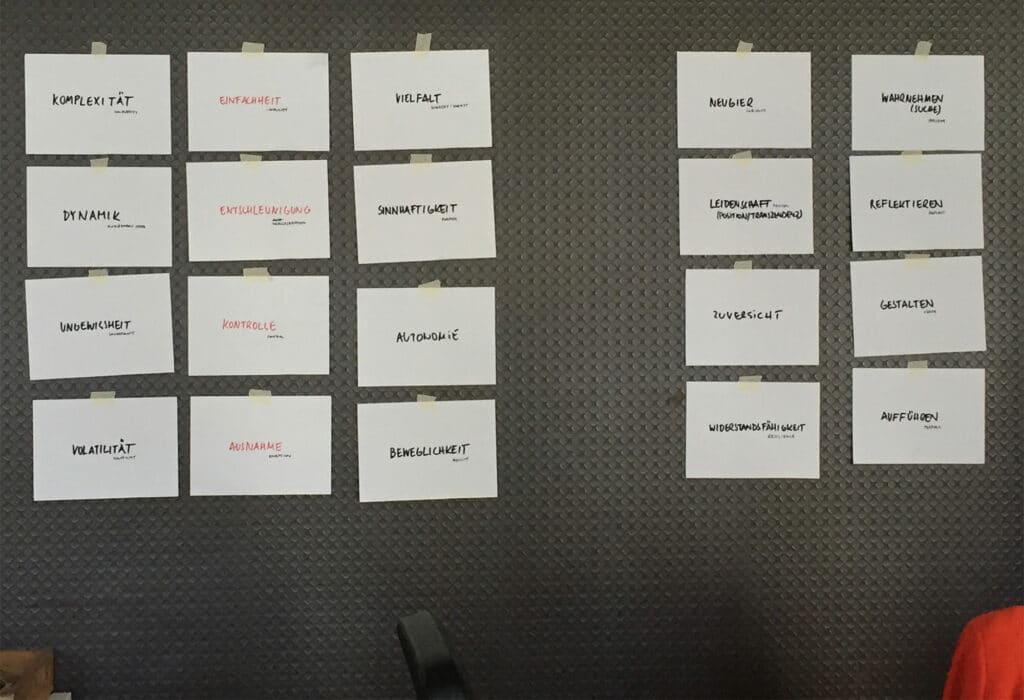The Age of Artists-Framework develops from the observation of artistically active people. It describes individual contexts that add up to a large, meaningful whole. It is not a method or a recipe book that one can work from to become more creative. Rather, it is a framework that can help people to create their own model, their own theory, from their own personal experience.
The starting point is the global challenges of our time, as well as the demands arising from our pursuit of economic growth and technological advancement, because these are the challenges that (according to many people) lead to greater complexity, acceleration, uncertainty and volatility. In an attempt to deal with these four conditions, we almost inevitably base our actions on the desired result. We attempt to counter complexity with reduction to reach simplicity, acceleration with mindfulness to develop consciousness, uncertainty with control to get certainty, and volatility (sometimes in the form of crises) with risk minimization to accomplish strength. However, when we realized that for artists complexity, acceleration, uncertainty and volatility are not states to be avoided or eliminated, but rather welcomed, we could see that perhaps the artistic world could offer better strategies for dealing with these states.
The Age-of-Artists-Framework as artwork
Etchings by the artist Verena Wald
We have found that artists have a very special attitude, whose essential elements are curiosity, passion, confidence and resilience. Although this attitude is common among artists, it is by no means reserved for this group. Everyone can develop these qualities; they are present in all of us. They evolve over time and through practice—regardless of whether someone paints, makes music, writes, researches, designs, builds, sells or consults. It is characteristic of artistic practice that it follows a non-linear process. Although based on a more or less concrete idea, the process is constantly evolving from the ongoing dialogue between the artist and the artwork. The creative process combines recurrent patterns that can be traced across many genres and can be described as perception, reflection, play, and performance.
Organizations that can create and sustain an environment that enables and encourages artistic action, organizations that empower and encourage their employees to develop an artistic approach to their work, can strengthen their culture of creativity. They become more innovative and adaptable. They value variety, versatility, and the spirit of discovery as a contribution to entrepreneurial success. They strive for purpose for their employees and see themselves not as a purely economic entity, but as a part of society. They enable autonomy by encouraging individual responsibility and providing employees free space to create. They are elastic and can adapt continuously, they are agile in all things, no matter how volatile or uncertain their environment.
Ultimately, the four main chapters of the book describe how to move from complexity to simplicity through perception, curiosity and variety; how to move from acceleration to consciousness through reflection, passion and purpose; how to move from uncertainty to certainty through play, confidence and autonomy; and how to move from volatility to strength through performance, resilience, and elasticity.



